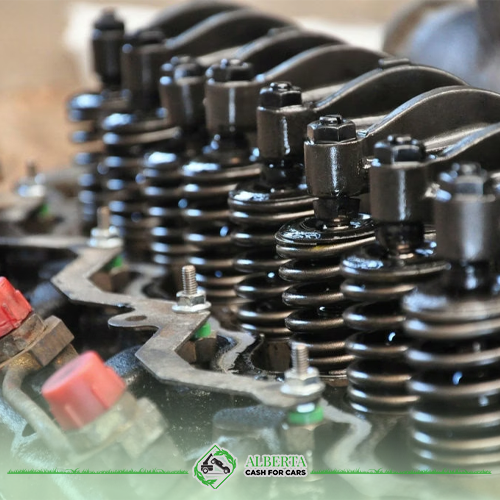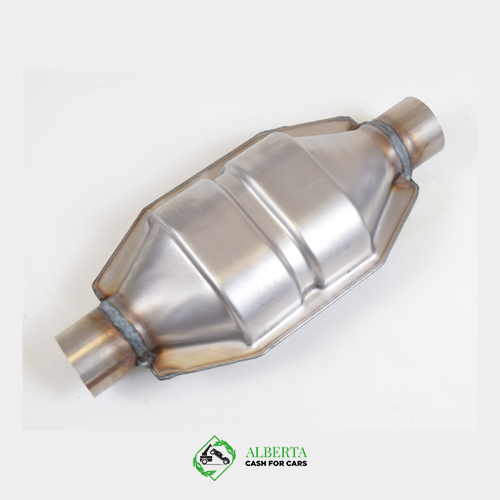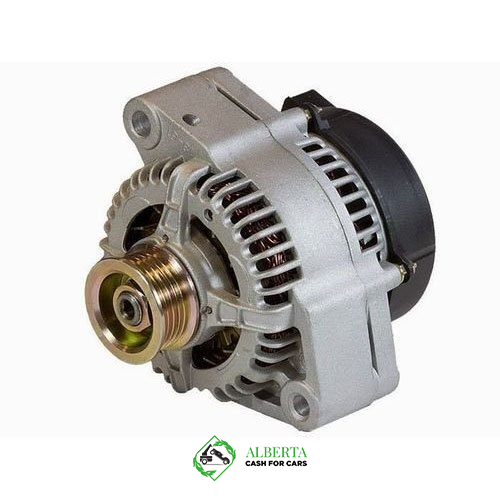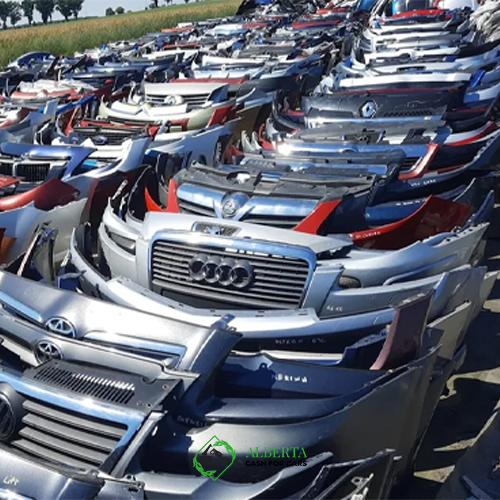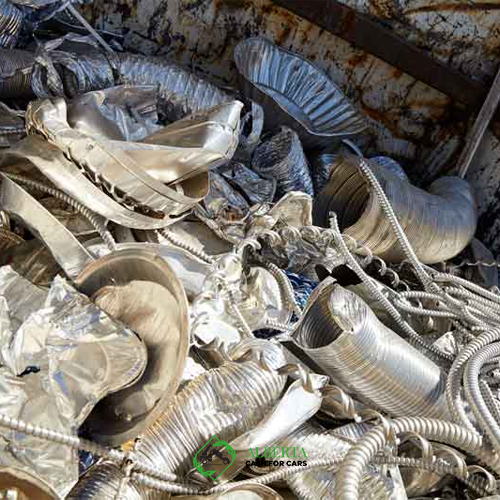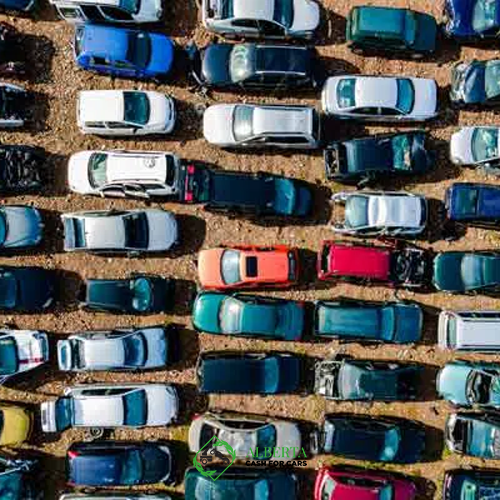Scrapping old, damaged, or unused vehicles provides an opportunity to recover value from their parts while also responsibly disposing of metal waste. Certain components retain significant value in the auto salvage and scrap market due to material content or reuse potential.
Age of environmental consciousness and sustainability, automobile recycling has emerged as a crucial industry. Beyond its environmental benefits, scrapping cars can also be financially rewarding. This comprehensive blog post of Cash for Cars Calgary delves into the world of car scrapping, focusing on the most valuable parts on a car to scrap that can fetch a handsome return. From engines and catalytic converters to body panels and electronics, we explore the intricate process of recycling, reconditioning, and reselling these parts. Additionally, we offer tips on maximizing scrap value and discuss the environmental advantages of responsible recycling.
List of Most Valuable Parts on A Car to Scrap
Beyond the obvious environmental benefits, scrapping a car can be financially rewarding, provided you know which parts hold the most value. Here is a list of the most valuable parts on a car to scrap:
Engine and Transmission
A car’s engine and transmission typically constitute the most valuable components for salvagers. Based on make, model, condition, and mileage, intact engines and transmissions can be profitably removed, reconditioned, and resold as replacement parts. Four-cylinder economy car engines generally fetch $300 to $700 at scrap yards. Higher-performance six and eight-cylinder luxury/sportscar engines can net $1000 to $2500 depend on the country you’re in. Manual transmissions earn $500 to $1200 while more complex automatics fetch up to $2000. Proper extraction without damage optimizes scrap value.
Catalytic Converter
Catalytic converters play a crucial emissions control role using precious metals like platinum, palladium, and rhodium as catalysts. Recovering these scarce metals makes converters very lucrative to remove, with scrap prices from something about $50 for older models up to $1500 for newer converters. Unfortunately, high black-market demand has also led to increased theft of converters. Responsible scrappers should verify legal title prior to scrapping converters. Proper documentation also maximizes payouts from scrap yards when legally selling used converters.
Aluminum Wheels
Today’s aluminum alloy wheels are more durable, attractive, and valuable than old steel wheels. While steel wheels weigh around tens pounds with minimal scrap value, aluminum wheels usually weigh half as much while providing up to $100 scrap value each. The alloys used impact pricing – low-silicon alloys are more desired than cheaper high-silicon wheels. Proper sorting maximizes payouts. Some premium alloy wheels in good condition also sold to enthusiasts in the used parts market for added value.
Car Batteries
Another item in the list of most valuable parts on a car to scrap is car battery. The lead and acids contained in car batteries make them an environmental hazard but also give them recycling value. Old batteries can earn usually $10 to $30 when scrapped. Battery recycling via specially permitted salvage facilities recovers over 80% of the lead for reuse. Illicit dumping of old batteries leads to soil contamination and groundwater pollution. Scrap yards often charge fees for unprepared batteries requiring draining and neutralization prior to scrapping.
Alternator and Starter Motor
Alternators and starter motors contain copper coils and circuitry that make them valuable for scrappers after refurbishing is uneconomical. Scrap value for worn units is about $10 to $30 depending on where you are located; these costs can be different. Proper handling during removal prevents damaging their copper windings. Sorting motors by type optimizes scrap payouts.
Radiator and A/C Condenser
Radiators and AC condensers in good condition can earn up to $120 when sold for reuse in the parts market. Even heavily damaged units provide $20 to $60 of scrap value. Their aluminum cores and copper tubing make radiators and condensers metal-rich components. Proper coolant drainage prior to scrapping is crucial – anti-freeze recycling prevents pollution while maximizing scrap yard payouts.
Electronic Components
Modern vehicles contain various electronic modules and sensors with resale potential, including engine control units, anti-lock brake modules, airbag control modules and variable valve timing actuators. Units fetching over 100 bucks are worth identifying and detachment. Infotainment systems, GPS navigation units, backup cameras and sensors are also valuable electronics to extract before scrapping cars.
Body Panels and Bumpers
Dent-free hoods, doors, fenders etc. on popular models can sell for $200 to $1000+ in the used body parts market. Even damaged panels offer some scrap value from their steel or aluminum content. Similarly, undamaged plastic bumper covers fetch $100 to $300. Careful removal optimizes reuse potential. Identifying in-demand models guides profitability.
Scrap Value vs. Part Reuse
Wholesale auction of individually extracted components can yield 2-3x more revenue than scrapping the entire vehicle. The time invested in systematic deconstruction is rewarded by unlocking the hidden value retained in components beyond just the raw hulk metal recycling value. Even non-functioning parts sell based on material content and demand. However, heavily damaged vehicles may not justify full dismantling – a cost-benefit analysis is prudent.
Maximizing Scrap Value – Best Practices
Some tips to maximize revenue when scrapping vehicles for the most valuable parts on a car to scrap:
- Research in-demand model years and trims with valuable parts before scrapping.
- Carefully detach valuable components like electronics without damage for resale.
- Drain all fluids (fuel, motor oil, coolant, A/C refrigerant) prior to scrapping to avoid waste fees.
- Separate metal components based on material (steel, aluminum, copper, etc.) for optimal sorting.
- Provide legally required proof of ownership/title transfer paperwork when scrapping regulated parts.
- Evaluate multiple scrap yards to identify the most competitive payouts. Transport costs matter.
Environmental Benefits of Auto Recycling
Responsibly scrapping cars provides major environmental advantages:
- Recycling car metal reduces the energy consumption of mining new ore by over 75%. This results in lowered greenhouse gas emissions.
- Hazardous chemicals and fluids are systematically removed and disposed of properly before recycling. This prevents soil and water contamination.
- Car plastics and rubber are increasingly recycled into new parts, construction materials, clothing, and other products rather than landfilled.
- Extracting working parts for reuse directly reduces the environmental impacts of new production.
- Old, inefficient car models are sustainably disposed of rather than remaining on roads emitting pollutants.
Characteristics Boosting Auto Part Values
Understanding most valuable parts on a car to sell imparts higher valuations helps focusing removal efforts on items bringing sufficient pricing justifying labor investments taking down, cleaning and photographing for online listings afterwards:
Ease of Removal & Reinstallation
Parts that mechanics detach simply using standard tools in under an hour fit simplified handling criteria for online sales logistics over bulky engine blocks or doors requiring special equipment moving around.
Broad Model Compatibility
The wider range of vehicles a functioning component gets stripped off Proof compatibility beyond one-off niche models, the larger addressable consumer audience exists. Parts interchangeability equals confident marketability.
Low Mileage Items from Newer Vehicles
Components sourced from newer cars accidentally totaled relatively low odometer readings assure longevity assurances buyers appreciate over items nearing expected lifecycle expiration points anyway. Communicate this clearly.
Pricing Used Auto Parts Realistically
Setting prices aligned with current market rates gives your item listings the best shot actually attracting buyers ready transact given sensible valuation perspectives. Check pricing guidance sources for most valuable parts on a car to sell:
Junkyard Parts Pricing Reference Sheets
Many auto recyclers publish updated wholesale pricing sheets on top components informing resale precedent pricing ranges based on real supply-demand conditions. Adjust for retail margins.
Grading Matrix Conditions
Evaluate part wear grading matrices from industry guides accounting for visible corrosion, hardware defects and testing confirmations gauging appropriate price qualifications similar to appraisal adjustments.
Negotiation Tactics
Wholesalers expecting bulk inventory deals will negotiate buying numerous parts bundled together may grant up to 30% discounts their offer prices listed depending on urgency sell items occupying warehouse space and scarcity of parts in demand.
Conclusion
Methodically identifying, extracting, and recycling valuable car components offers financial upside beyond wholesale hulk scrap value while promoting environmental stewardship. To earn some cash for the most valuable parts on a car to scrap, through components like engines, catalytic converters, and electronics typically offer prime reuse and salvage potential during vehicle deconstruction. Best practices for systematic dismantling, safe fluid handling, and component sorting optimize revenue. Overall, responsibly scrapping cars constitutes an ethical and often lucrative end-of-life practice for automobiles.


